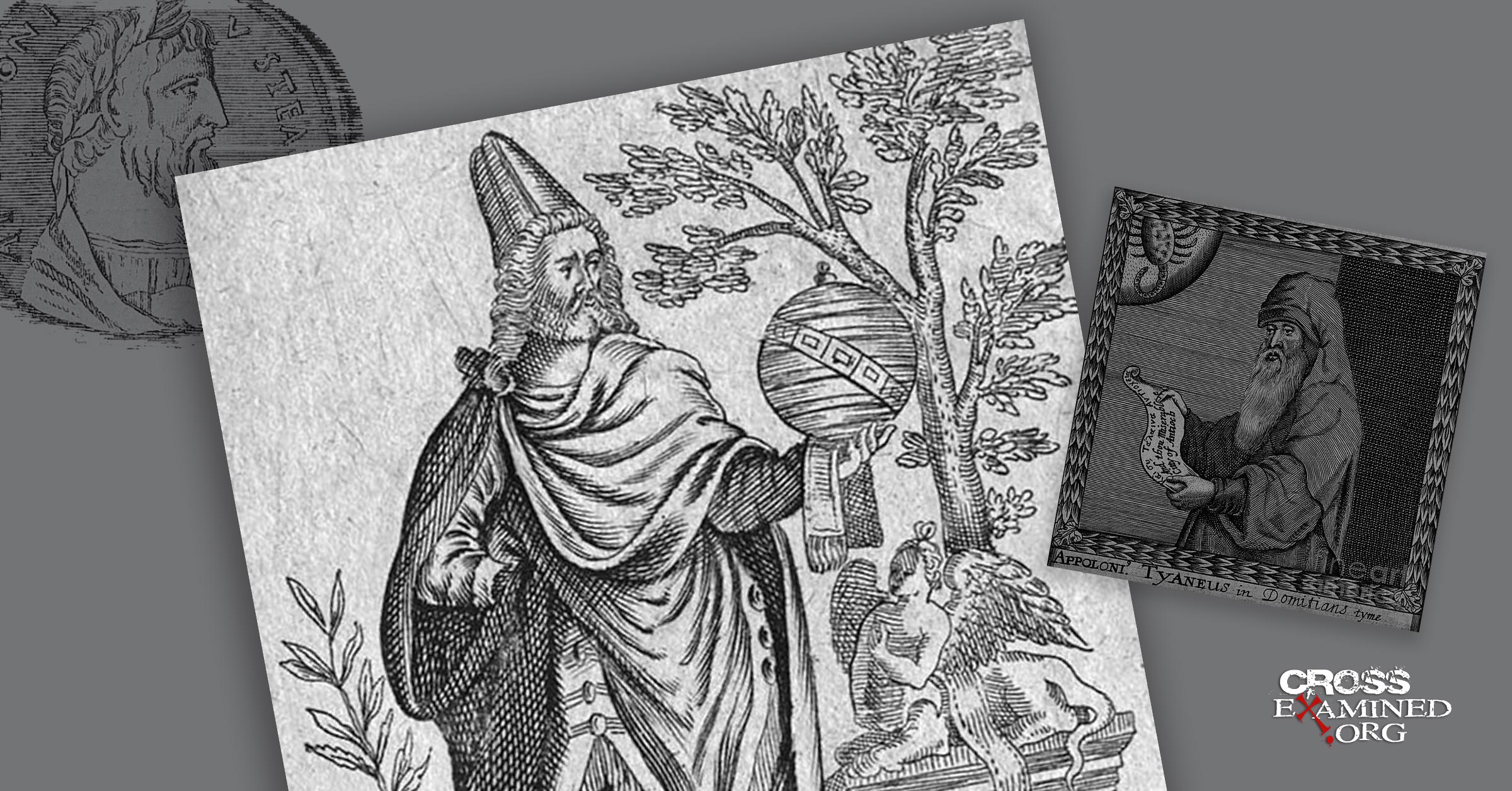Bart Ehrman is the most popular skeptic in America today. Writing at super-sonic rates, his books seem to find their way on the New York Times Bestseller list about every other year. Because of his rapid output and wide popularity, his views are spreading like gangrene across the American landscape (and beyond).
Additionally, Ehrman is a professor of religion at UNC-Chapel Hill where he works to cripple the faith of every young Christian who enters his classroom. He shares one of his faith-crippling tactics in his book How Jesus Became God.
Ehrman tells the story of beginning his class by sharing this description of a famous man from the ancient world.
“Before he was born, his mother had a visitor from heaven who told her that her son would not be a mere mortal but in fact would be divine. His birth was accompanied by unusual divine signs in heaven. As an adult, he left his home to engage on an itinerant preaching ministry. He gathered a number of followers around him who became convinced that he was no ordinary human, but that he was the Son of God.
And he did miracles to confirm them in their beliefs: he could heal the sick, cast out demons, and raise the dead. At the end of his life, he aroused opposition among the ruling authorities of Rome and was put on trial. But they could not kill his soul. He ascended to heaven and continues to live there till this day.
To prove that he lived on after leaving his earthly orb, he appeared again to at least one of his doubting followers, who became convinced that in fact, he remains with us even now. Later, some of his followers wrote books about him, and we can still read about him today.1
Ehrman, of course, wants everyone in his class to thinks he’s talking about Jesus. But alas, he reveals the shocking news that he wasn’t talking about Jesus at all. Instead, he’s referring to Apollonius of Tyana.
This revelation is intended to rattle whatever remaining faith his Christian students might have. For if he can demonstrate that Jesus’ story isn’t any different from Apollonius of Tyana, well then Jesus must not be the unique Son of God after all.
Apollonius of Tyana — The Skeptics’ Best Parallel
As demonstrated in the story above, skeptics think that if they can show parallels of Jesus from the ancient world, they can prove that Jesus was just one more in a long line of myth stories.
And Ehrman isn’t the only skeptic using this tactic. In fact, if you listen to debates on the historical Jesus, Apollonius of Tyana is mentioned far more than any other ancient “parallel.” In other words, Apollonius is the best parallel the skeptic has to offer.
So, should Christians be worried? Does Christianity crumble in light of Apollonius of Tyana? Was Apollonius even remotely similar to Jesus? No, no, and no. Allow me to elaborate.
The Problem of Dating
Apollonius supposedly lived between AD 15-96. That is, his life comes shortly after the life of Jesus. Yet the only source we have for his life comes from Philostratus in the third century (AD 225). In other words, there is virtual silence about this man for about 150 years prior to Philostratus’ work.
If Apolonnius had been a Jesus-like figure, how come nothing is said about him for such a long period of time?
Sources for Jesus, on the other hand, all date within the first century when eye-witnesses to his ministry would have still been around. The Gospels come about 30-50 years after his life, and Paul writes his letters even earlier (20-30 years after Jesus). Moreover, Paul quotes or references traditional material that predates his work by decades. All that to say, Jesus’ fame understandably spread shortly after his death and resurrection.
Yet we have crickets with respect to Apollonius. This is hard to believe if he truly was the Son of God who performed miracles and rose again from the dead.
The Problem of Motive
What did Jesus’ followers have to gain for spreading the message of Christianity? Ostracism at best, and death at worst. In other words, they had no motive (money, sex, or power) to make up these stories in a hostile environment. In the end, most of them faced severe persecution for their faith.
What about Philostratus? Well, it just so happens that he was paid by the empress Julia Domna to write a laudatory account of Apollonius’ life in order to improve Apollonius’ reputation amongst the Romans and diminish Jesus’ importance.
Living during a time when Christianity was spreading rapidly across the Roman Empire, the pagan empress needed to do something to restore cultic worship amongst the citizens. Funding this project seems to be her attempt to minimize Jesus’ fame.
Philostratus Was Skeptical of Apollonius’ Miracles
Philostratus, though, couched miracle claims with phrases such as “it is reported that” or “some believe.” Case in point. Reporting on Apollonius of Tyana’s most famous miracle (raising a dead girl to life), Philostratus reports that the girl probably wasn’t dead at all, and even states that only some believed she was. He indicates that this girl had some kind of mist coming out of her mouth prior to Apollonius “healing” her.
The Gospels are nothing like this. They make no qualms about Jesus’ miraculous activity. Furthermore, non-Christian sources also indicate that Jesus was a miracle-worker.
The Problem of Historical Errors
The Gospels provide all kinds of evidence for their historical reliability. Non-Christian corroborating sources, eye-witness testimony, an understanding of local customs, and embarrassing material all suggest that these sources are trustworthy.
Since not many people will take the time to read through Philostratus’ five hundred page work on Apollonius, they will miss out on the fact that Philostratus made all sorts of historical errors — mostly anachronisms.
The blunders are so bad that historian H. C. Kee reports, “what Philostratus reports tells us a great deal about the author and his time — that is, at the turn of the third century — but provides no unassailable evidence about Apollonius and his epoch.”2
While Philostratus attempts to give us a biography, many scholars acknowledge that his work reads more like a romance novel. As Boyd and Eddy remark, “while few have gone so far as to reject a historical Apollonius altogether, most scholars are rather skeptical about the historicity of major aspects of the image offered by this one source written well over a century after the figure it depicts.”3
The Alleged Resurrection
Jesus’ resurrection is the single-most-important fact about Christianity. If he didn’t rise, Paul says, we’re still in our sins. Fortunately, Jesus did die and rise again as the Gospels report, and there’s ample evidence to back this up this claim.
But what about Apollonius of Tyana? Did he rise again as Ehrman suggests? Simply put, no he did not. The only hint in Philostratus’ work that gets remotely close to a resurrection is when one doubting disciple has a dream about the spirit of Apollonius after his death.
A Parallel? Really?
Scholars have systematically debunked every line from the Erhman quote above. At best, he’s misleading. At worst, he’s downright deceitful.
No heavenly messenger announced Apollonius’ birth and said he would be divine. That messenger actually came from Egypt and never said Apollonius would be divine. He wasn’t so much an itinerant preacher as he was a visitor of foreign sages. Furthermore, he took a vow of silence for several years as he began his journey. His miracles were dubious, and he wasn’t killed by Roman authorities. Nor did he rise from the dead and appear to his followers. And none of his followers wrote books about him either.
Be that as it may, what if Philostratus had reported exact parallels? What would that prove? For starters, Jesus predates Apollonius. So any parallel would be evidence against Apollonius of Tyana and not Jesus.
Additionally, even if these so-called parallels did exist, it wouldn’t do anything to diminish the historical Jesus.
Taking this line of thought, you could prove I’m a myth because of the parallels between my life and Bart Ehrman’s. Both of us went to Bible college and later seminary. We both write about the historical Jesus and teach others about the Bible. Both of us live in the Carolinas. We’re both white males. And on and on.
The point is you can find parallels anywhere. Many have shown parallels between Abraham Lincoln and John F. Kennedy. Does that mean Kennedy was a legend? Absolutely not.
In the end, it’s not the parallels that matter, but the differences. So while the story of Apollonius of Tyana is interesting, it does nothing to disprove the historicity of Jesus Christ.
Recommended resources related to the topic:
Early Evidence for the Resurrection by Dr. Gary Habermas (DVD), (Mp3) and (Mp4)
Cold Case Resurrection Set by J. Warner Wallace (books)
Did Jesus Rise from the Dead? By Dr. Gary Habermas (book)
Jesus, You and the Essentials of Christianity – Episode 14 Video DOWNLOAD by Frank Turek (DVD)
The New Testament: Too Embarrassing to Be False by Frank Turek (MP3) and (DVD)
Cold-Case Christianity: A Homicide Detective Investigates the Claims of the Gospels by J. Warner Wallace (Book)
The Top Ten Reasons We Know the NT Writers Told the Truth mp3 by Frank Turek
Ryan Leasure holds a Master of Arts from Furman University and a Masters of Divinity from the Southern Baptist Theological Seminary. He currently serves as a pastor at Grace Bible Church in Moore, SC.
Original Blog Source: http://bit.ly/33XD6Pq


















Facebook Comments